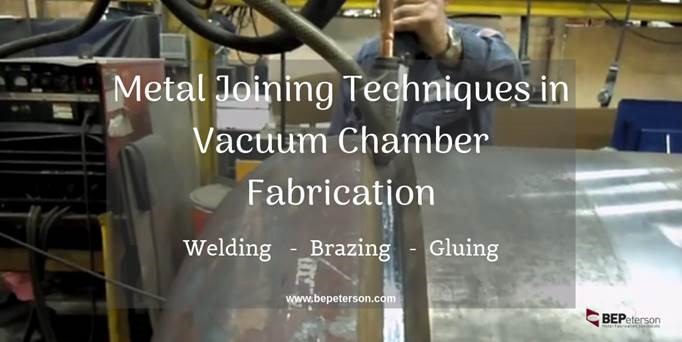Aluminum vacuum chambers are specialized vessels that are commonly used to remove all traces of gases and air for a wide range of applications. These rigid enclosures are also utilized for several purposes such as vacuum degassing, vacuum drying, atmospheric simulation, vacuum impregnation, and vacuum encapsulation, among others. Considering the nature of these demanding applications, vacuum chambers are fabricated to the utmost quality, meeting engineering requirements. Although each stage of the fabrication requires extreme care and diligence, vacuum chamber fabricator implies extra effort while joining metal pieces. Several metal joining techniques are being utilized by the vacuum chamber manufacturer to prevent leaks in the chamber. This post discusses various critical metal joining techniques used by vacuum chamber fabricators.

Methods Used to Join Metal Pieces while Fabricating Aluminum Vacuum Chambers
When it comes to aluminum vacuum chamber, any kind of leakage cripples the work and affects the overall performance of the unit. Choosing the right joining technique, thus, holds paramount importance during aluminum vacuum chamber fabrication. The following are the three main methods utilized by vacuum chamber fabricators to prevent leaks and subsequent problems.
- Welding: Amongst the several welding techniques available , vacuum chamber manufacturers utilize Tungsten Inert Gas (TIG) welding in the fabrication. Since the welding heat and cooling technique employed can change the properties of metal, it is advisable that the welding personnel possesses the professional qualification to create leak-tight permanent welded joints. The following are the several styles of weld joints commonly used in vacuum chamber fabrication, which prevent latent or virtual leaks.
- Butt Welds
- Lap Welds
- Corner Welds
- Tee Welds
- Edge Welds
- Brazing: Brazing is a common yet expensive technique utilized to make a joint between metal pieces. During brazing, base metal does not melt, but only the chosen filter metal melts to form a joint. Base metal, filler metals to be brazed, and the heating method must be selected carefully considering several parameters. There are torch brazing, furnace brazing and induction brazing, which are commonly utilized to form a strong load-bearing joint. This kind of joining method is chosen when the vacuum chamber manufacturer requires strong and ductile strong metal-to-metal joints.
- Gluing: There are several high-performance epoxy adhesives available to achieve structural joining of aluminum vacuum chambers. Offering the advantages of impeccable resisting to solvents, lubricants, alcohol, and mild acids, these adhesives support the mounting of components to the wall of the vacuum chamber and keep in place the nuts/bolts, among others.
Globally, vacuum chamber manufacturers use the aforementioned metal joining techniques to make reliable joints. However, the selection of the right type is depended on the design criteria, nature of the application, and term of usage, among others. You may also seek clarification about the metal joining techniques discussed in the post by contacting any leading manufacturer like BEPeterson. Vacuum chamber fabricator like BEPeterson provides you with expert guidance on the manufacturing and assembling techniques employed for aluminum vacuum chambers that are in trend today.
